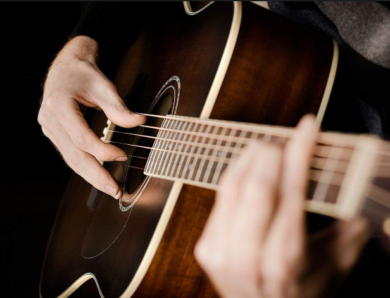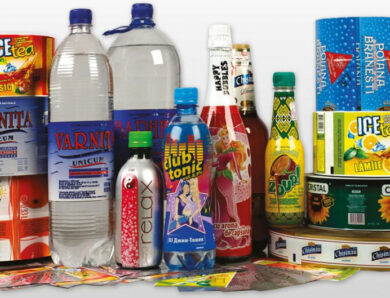Stormwater treatment: basic methods of wastewater treatment and debris
Storm sewer is a construction, which provides favorable living conditions on the site. It performs the function of collecting melt and rainwater and diverting it outside the territory. During operation, this system accumulates various debris (leaf, sand, stones, etc.. d.). In accordance, clogging is formed, which reduce the performance of communication and there is a need for such an event, as storm sewer cleaning.
Stormwater treatment is carried out using systems, which include filtering devices of various types
Features of storm sewer
The operation of storm sewers is not limited to the simple collection of precipitation. Wastewater must be disposed of, and before that - to clean from harmful impurities. Drainage and wastewater treatment is performed by any sewerage network. To harmful impurities, contained in wastewater, include:
- gasoline and engine oil;
- various chemical reagents, which sprinkle the roads in winter;
- various garbage, which, anyhow, gets into sewage.
pay attention! These impurities are removed from the water through treatment plants, which include various equipment. Stormwater treatment is in several stages.
If the system is not equipped with cleaning devices or does not cope with the tasks, possible clogging of the sewer system.
Components of a private treatment plant
Cleaning system, which is used for household purposes, has the following structural elements:
- special container for collecting liquid;
- sand trap;
- oil trap or oil trap;
- sorption device.
The storm sewer must be equipped with a cleaning system
Fluid collection tank
This element of the treatment system is directly connected to the storm sewer. Such a tank is designed to collect wastewater, which are formed as a result of heavy precipitation or melting snow.
The tank for collecting sewage accumulates liquid. Their capacity of moisture enters other parts of the structure, where there is a gradual treatment of stormwater runoff. The main function of this tank is to protect the cleaning elements of the system from overload.
Sand trap
This device is activated in the first stage of cleaning. The sand trap performs a filtering function and separates large particles, contained in wastewater. This detail is indispensable, because it is able to hold close 65% rubbish, which contains sewage. Keep this in mind when operating the sand trap, that it needs regular cleaning. Inspection of this equipment should be carried out at least 1 once in 3 months, as well as immediately after a large amount of precipitation.
Oil trap or oil trap
Any sewage treatment plant must be equipped with an oil trap or oil trap. Such equipment is designed to treat stormwater wastewater from oil waste and oils. These substances contaminate the soil, water and are released primarily from cars.
Special filters retain oil and petroleum products, contained in the water flowing into the system
Wastewater treatment from petroleum products is performed by filtration. After, as contaminants filtered out, they are coagulated (combine) in larger components. After coagulation, oily stains come to the surface and are removed with special equipment.
Sorption device
The sorption unit is the last stage of purification from harmful impurities of sewage. This device adsorbs fine particles, which have passed through the first stage of purification, and collects residues of petroleum products and oils, which remained in the water after the oil trap.
Sorption device is equipped with several filters, which capture particles. These filters must be replaced periodically.
Methods of cleaning storm sewers from debris
Often in the storm sewer clogging is formed. This is why, that the cleaning equipment does not perform its functions or fails. Regardless of the type of storm sewer, clogging can occur in any system.
Litter clogging is a common phenomenon and must be combated in all available ways
Depending on the design and type of debris, there are several basic ways to eliminate them:
- mechanical;
- chemical;
- hydrodynamic;
- thermal.
Each of these options for removing debris has its own characteristics.
Mechanical method
This method is used for that, to clean the contaminated storm sewer area. Usually, for this purpose use a special cable, which can have different configurations. At one end of the cable is a special nozzle, due to which the destruction of debris. At the other end is the handle, which is needed for that, to twist the rope. Consider the main stages of cleaning storm sewers using a mechanical method:
- First you need to remove the protective grille.
- Then you need to twist the cable and immerse it in the sewer pipe,
- When you feel it, got to the place, where clogging is localized, you need to start turning the rope handle.
pay attention! If the blockage is too strong, then, perhaps, you will have to repeat this procedure several times (periodically remove and wash the cable nozzle).
exept this, you only need to twist the cable in one direction, otherwise there is a risk of damage to the sewer pipe or the device itself. The main function of the cable is to break the garbage plug, so that later they can be removed with a jet of water.
Cleaning with a rope will give results in that case, if the blockage is not very dense
Chemical method
The chemical method is used less often, than mechanical. This option is necessary in cases, when the blockage has already hardened. Active chemicals are used to soften the plug. It is not recommended to carry out such cleaning independently, as chemicals can damage sewer pipes. People need to be hired to clean with chemicals, who are well acquainted with all the nuances.
The process of dry cleaning is conventionally divided into 2 stages:
- Active chemical compounds are fed into the system under high pressure.
- After that, the system is washed with clean water, so that the reagents do not damage its components.
Consider the disadvantages of using this method:
- during this event stand out have an unpleasant odor and, usually, hazardous substances.
- the service life of the system is reduced;
- this method harms the environment;
- services of professionals, maintenance of special equipment and reagent costs, make this method quite expensive.
For, so as not to have to spend a tidy sum to clean the storm sewer, it is necessary to carry out systematic preventive washing of this design.
Hydrodynamic method
This method is the most popular and convenient option. Perform hydrodynamic cleaning of rainwater drainage under the force of an ordinary person, however, such services are provided by various organizations.
During hydrodynamic cleaning, water is fed into the pipe under high pressure, due to which the garbage plug collapses
The principle of this method is as follows: water under strong pressure is fed into the sewer pipe. Clogging under water pressure is destroyed and pushed further. As a result of garbage, from which the sewer thrombus was formed, is removed from the system. Within your site, you can use a household appliance to clean the sewer. Professionals use special equipment, which can create a fluid pressure with a pressure of up to 120 atmospheres. Such equipment includes silos and duct washing units. Special equipment is used to clean long pipes. exept this, large diameter pipes are also cleaned with machines.
Cleaning a large storm sewer is quite a difficult task, which takes a long time. There are also some nuances, which are worth thinking about, to perform a large-scale cleanup:
- it is necessary to consider the location of cleaning machines, so that they do not interfere with the movement of cars;
- to equip special equipment with decking, if there is a danger of loading the machines into the ground;
- determine the source of water (example, hydrant);
- determine the place, where dirty water will flow.
Importantly! If the storm sewer has a diameter of not more 200 mm, then its cleaning can be carried out using car wash equipment. In domestic cases, the usual garden hose is often used.
With small blockages, it is recommended to perform hydrodynamic cleaning on both sides of the system.
Thermal method
This method differs from hydrodynamic only in water temperature. Flushing of the system in order to remove debris is carried out with hot media. This way, usually, used for heavy blockages. Sometimes cleaning is carried out by steam, which is also a very effective method. Water temperature, which is used for thermal cleaning, is close 120 °C. The equipment for this method costs a lot of money, therefore, it is not always possible to apply it.
Large diameter pipes are cleaned by the same hydrodynamic method, but with the help of dimensional equipment
Prevention of clogging
There are a number of rules, which must be followed, to avoid clogging in the storm sewer:
- rainwater drainage should be designed taking into account building codes and regulations (SNiP);
- it is not recommended to arrange very long or curved sections;
- in places of branching, difference or turn of communication, it is necessary to install inspection wells;
- for the arrangement of such communication pipes with an internal smooth surface will be best;
- storm sewer pipes must have good corrosion resistance;
- preventive measures should be taken regularly (cleaning chambers, lattice, garbage cans, etc.);
Stages of installation of cleaning elements
Installation of cleaning elements is carried out taking into account building codes and regulations (SNiP) and is performed in the following order:
- Depending on the design characteristics of storm sewer elements, it is necessary to dig suitable trenches and ditches.. This work can be done on their own or with the help of special equipment;
- if necessary, the bottom of the pits is concreted. As a result, it turns out something like a foundation for future communication;
- according to the project plan, installation of cleaning devices is carried out on pre-selected places;
pay attention! It is necessary to install insulation and waterproofing materials on all elements of the storm sewer.
- after, as the structure is installed and protected backfilling of trenches and ditches is performed, with the elements laid in them.
Proper planning and installation of storm sewer communication, as well as systematic inspections and preventive cleaning will avoid clogging and extend the life of the system as a whole.




